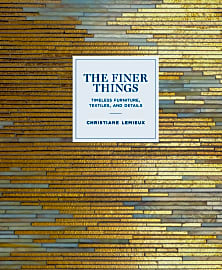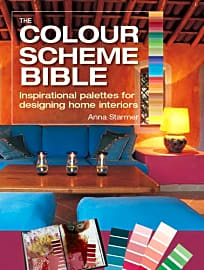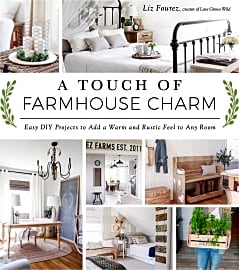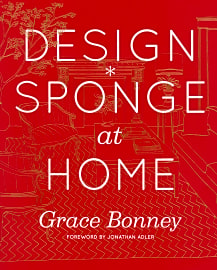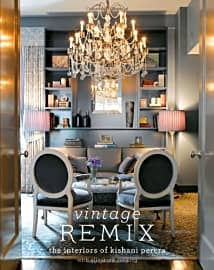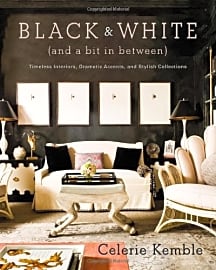The 10 Best Interior Design Books

This wiki has been updated 41 times since it was first published in August of 2015. If you are looking for some fresh ideas for bringing a touch of style into your home, then look no further than our selection of interior design books. Written by seasoned professionals, they cover just about every taste and budget and prove that you don't have to spend a fortune in order to create impressive living spaces in any type of house or apartment. When users buy our independently chosen editorial picks, we may earn commissions to help fund the Wiki.
Editor's Notes
January 17, 2020:
Perfect for people who want to take designing their home into their own hands, rather than hiring a professional, the volumes on this list are full of actionable guidance from experts. We wanted to select a variety of books to speak to every taste, help those who want to make small, manageable changes in line with their budget, and engage readers who appreciate seeing inspirational photos of immaculately curated living spaces to help spark ideas.
Because this is a popular category with plenty of players, we decided to remove three books in our latest round of updates. We said goodbye to Suzanne Kasler: Timeless Style because it is a bit too safe and doesn't offer up enough practical information. And while the minimalist tips espoused in Simplicity by Nancy Braithwaite are worth looking at, we feel that it touches on many ideas that can be found in other books. Decorate: 1,000 Design Ideas is a functional, useful option, but something like Homebody: A Guide offers the same helpful content with more flair and personality, which in turn is more inspiring.
We added The Finer Things, an extremely instructive selection that encompasses a staggering amount of detail and years of meticulous research, and Cozy White Cottage, a helpful volume that's very accessible and thoughtful.
Many of the books on our list go further than simply advising on the arrangement of a room and providing glossy photos. Some, like Homebody: A Guide go over common issues and how to troubleshoot them, while A Touch of Farmhouse Charm goes in-depth on how to use tools like saws and pocket hole jigs. Then, there's The Color Scheme Bible, which teaches concepts that can be applied to more than just interior design.
The Benefits of Owning Interior Design Books
Most people can benefit from owning a book on interior design.
Most people can benefit from owning a book on interior design. If used properly, they allow a variety of people to glean important knowledge about the layout, appeal, feel, and proper use of space in their home.
At its root, interior design is a mix of concepts from architecture, product design, and even environmental psychology. Yet interior design books are not meant to be textbooks. They involve little research on the reader's part, and are worded in a way that most people can easily understand. This breaks down the barrier between the reader and the world of interior design.
Interior design books are generally filled with pictures and prime examples of basic concepts. This is often overlooked, but very important. There are many different learning styles. While some people can be told a concept once and they remember it, many others are visual learners or experiential learners. These people need visual examples and real-life examples to try on their own to really get a feel for the concept. Luckily, there are many interior design books which cater to all types of learners equally.
Books about interior design also help people save money. While it is often a great idea to hire a professional designer to do the work when the time comes, this can be financially impractical at first. Having a basic understanding of design concepts empowers the reader to begin the process themselves, which also saves time down the road when they do choose to contract a professional.
What Concepts Are Included In Interior Design Books?
Interior design will always be focused around thinking of the house as a whole unit, not the sum of its parts. An interior design book can teach the reader the importance of keeping the general theme of the house throughout every room. This does not mean that every room should look the same, but rather that they should work together to tell the story of the house.
Certain colors have been linked to better cognitive performance, arousing certain emotions, and even increasing performance in sports.
One example of this is choosing a color theme to use throughout the house. This is not just about choosing a color for the curtains, but instead a palette that will be used continuously. Studies show the mind is affected by color in astounding ways. Certain colors have been linked to better cognitive performance, arousing certain emotions, and even increasing performance in sports. As such, choosing a color theme may make a direct impact in your personal life.
Another concept interior design books often cover is the focal point of any given space. A successful focal point is something which catches the viewers eye, and then keeps them interested enough to keep looking. Classic examples include a fireplace or furniture which contrasts the rest of the room.
Other ideas are more difficult to understand, such as the concept of rhythm in design. This is the complex way a room makes your eye travel through it. Concepts like this can seem intimidating at first, but interior design professionals break down the process in their books.
Is Feng Shui The Same As Interior Design?
Due to the popularity of feng shui principles in interior design over the years, many people use the two terms interchangeably. Feng shui is actually an ancient Chinese doctrine which links the concept of humans to their environment. At its core, feng shui is centered around the movement of chi or qui, which is the term used to describe the energy which emanates from all things. As such, it is very different from interior design, but they both use some similar principles.
Balancing a house with these natural energies is believed to produce a more harmonious life.
Various principles of feng shui can be applied to the land humans own, the structure of the homes they build, and even the interior design of the home itself. Designers who use the principles of feng shui say it adds a natural beauty to the spaces they are creating, and helps the entire space feel balanced.
The feng shui of a house is based on the baguas, which are eight symbols representing the different energies of the world. Balancing a house with these natural energies is believed to produce a more harmonious life.
From an interior design perspective, feng shui offers some useful insights into creating the most of any space. For instance, from the perspective of feng shui the front door of the house is where the energy gets in. The best design will allow this energy to flow freely by minimizing clutter around the entrance to the house. It is now a common practice in interior design to free up the entry way, as it makes the space feel more open and welcoming.
Other feng shui tips for the home are to put plants in the bedroom, books in the hallway, plug all the drains, and always keep the curtains open. It is easy to see that these are not interior design tips, they are tips for the energy of the space itself. This is the key difference between interior design and feng shui. The two disciplines can be used to accent one another, but are not the same concepts.





